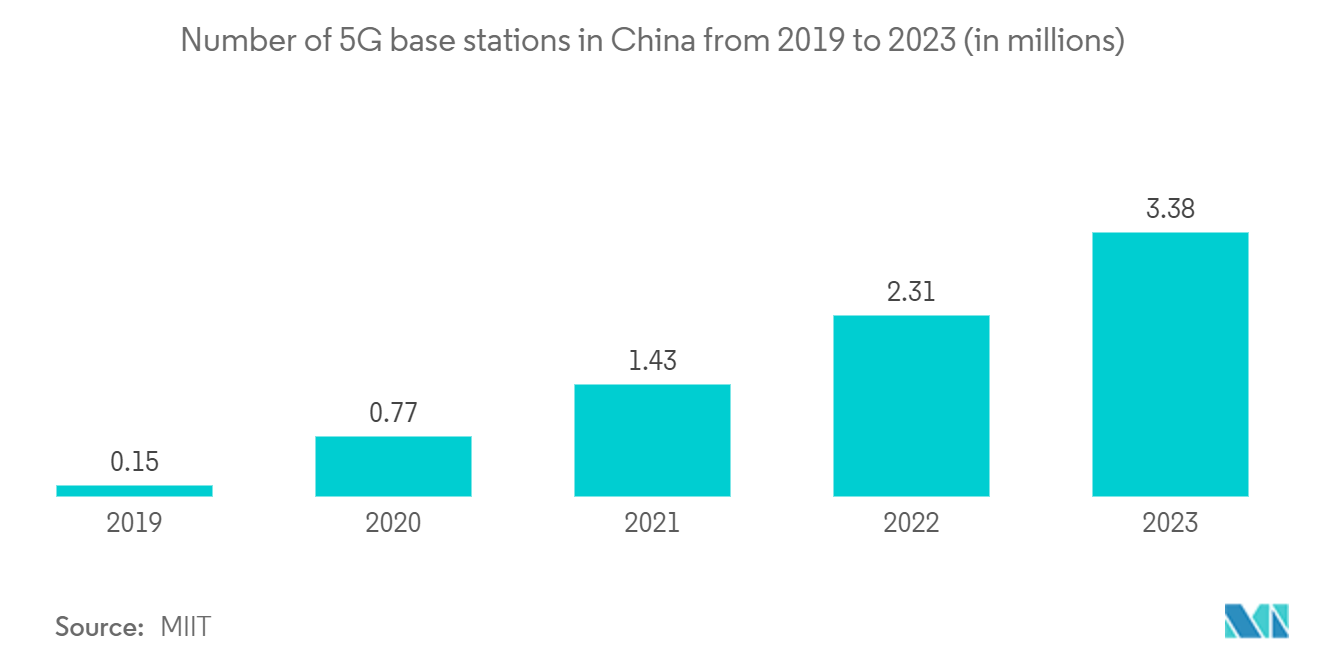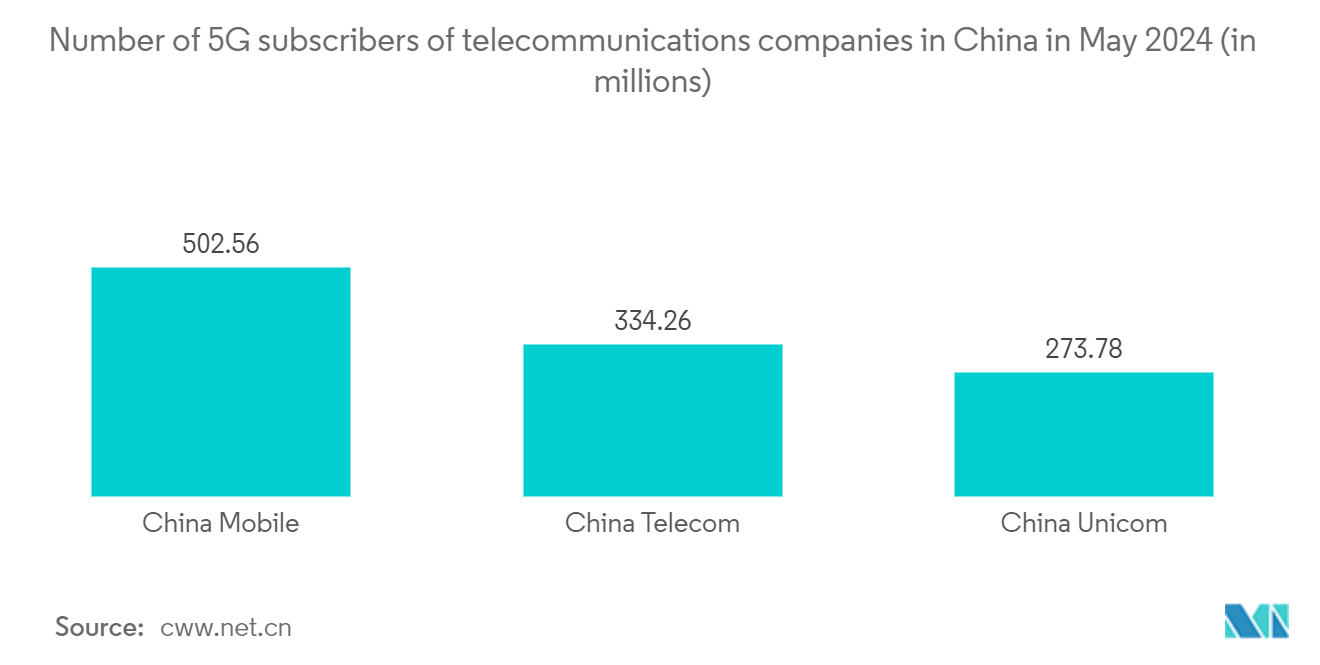Market Trends of China Cloud Computing Industry
Major Advancements in Digital Change Nationwide
- Cloud computing fostered innovation by providing access to advanced technologies, such as artificial intelligence (AI), machine learning (ML), and big data analytics. Organizations experimented and innovated without significant upfront investments. For instance, in 2023, China operated 448 data centres, trailing behind the UK (517), Germany (522), and the global frontrunner, the USA (5,375).
- Additionally, 2023 witnessed a heightened global footprint for Chinese cloud providers, largely fueled by the fervour surrounding generative AI. Moreover, Ii October 2023, the government set an ambitious target, announcing plans to double its cloud computing market by 2025. Moreover, retailers leveraged AI for enhanced customer insights, supply chain optimization, and dynamic pricing strategies. E-commerce platforms use AI to provide personalized shopping experiences and improve customer retention.
- Furthermore, as organizations digitized their operations, ensuring data security and regulatory compliance became a priority. Many cloud providers offer robust security measures and compliance with regulations, making them attractive to organizations handling sensitive data. Alibaba Cloud, the cloud computing arm of the tech giant Alibaba Group Holding Ltd, unveiled intentions to debut its inaugural cloud region in Mexico.
- Additionally, cloud computing enhanced digital transformation by evolving it from merely adopting new technology to a comprehensive restructuring of processes, tools, and experiences in a remote, virtual environment. Cloud solutions improve security, enhance user experience, and protect data integrity. Consequently, businesses increasingly incorporated cloud technologies into their operations, driving the growth of the cloud computing market.
- In parallel to this, numerous banking and fintech entities steadily transitioned to cloud technology since its inception. The financial sector experienced rapid growth in data creation and utilization. This transition enhanced transparency and gave consumers greater control over auditing processes and data management. Additionally, it offered a more flexible method for data classification.
- In June 2024, Akamai Technologies, Inc. forged a strategic partnership with Digital China, a prominent player in digital transformation, aiming to amplify Akamai's enterprise security solutions within China. This collaboration designates Digital China as Akamai's inaugural enterprise security distribution partner in the nation. Capitalizing on this partnership, both entities are set to introduce Akamai's state-of-the-art enterprise security products and solutions, complemented by customized service experiences tailored for Chinese businesses.

Telecom is Expected to Grow at a Significant Rate
- China's rollout of 5G networks is fueling a rising demand for cloud-based solutions. These networks, demanding substantial computational resources, are essential for managing heightened data traffic and facilitating new applications. For instance, as of Q1 2023, GSMA Intelligence reported that 198 operators launched 5G services, including Fixed Wireless Access (FWA), across 77 markets. Globally, 5G connections constituted 8% of all mobile links. Operators are projected to invest 85% of the USD 620 billion global mobile CAPEX on 5G from 2023 to 2025. Dominating the scene, China accounted for 68% of all global 5G connections as of Q1 2023, with local operators aiming to set up 2 million 5G base stations by the close of 2023.
- Furthermore, the IT sector is witnessing significant growth, spearheaded by giants like Alibaba and Tencent. Alibaba, once solely an e-commerce leader, has branched out into cloud computing, digital payments, and artificial intelligence. Its cloud division, Alibaba Cloud, has emerged as a key global player, providing scalable and secure solutions that drive the digital transformation of businesses worldwide. Additionally, Alibaba's AI innovations, embedded across its platforms, have transformed industries like retail, finance, and logistics, equipping businesses with advanced tools for enhanced efficiency and customer interaction.
- Moreover, telecommunications firms are harnessing cloud-based tools to refine their network infrastructure, boost performance, and cut costs. By adopting cloud technologies, these operators can streamline network management, delve into data analytics, and swiftly pinpoint potential challenges. For instance, a report from the MIIT highlighted that mainland Chinese operators had set up over 1.4 million 5G base stations. Building on this, the MIIT has ambitiously targeted a tripling of this number to 3.64 million by the close of 2025.
- In addition, cloud computing is pivotal for telecoms aiming to elevate customer experiences. These platforms facilitate service personalization, real-time support, and behavioral analytics to discern trends and preferences. Notably, SASAC has endorsed 36 centrally owned enterprises to roll out cloud platforms spanning 40 industries. Additionally, China Telecom's cloud infrastructure underpins 24 of these 40 industry platforms.
- With intensifying competition in the telecommunications realm, companies are seeking avenues for differentiation and profitability. Cloud computing emerges as a strategic ally, empowering telecom operators to introduce innovative services, curtail expenses, and bolster operational efficiency.


